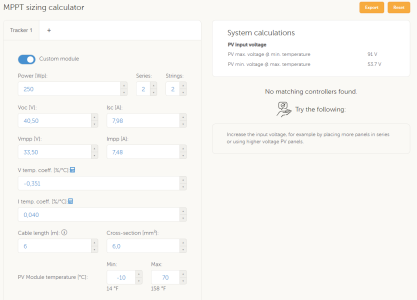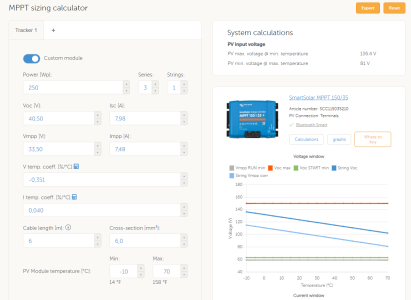noelex
Well-known member
One concern with the Integral system is the side load on the front of the engine. Depending on the engine, this is sometimes well above the manufacturers’ recommendations. Whether this will lead to long term problems is not clear.
An alternative to the Integral system is a high capacity large frame alternator. This will not produce as much power (around 2-3 kW is typical), but can be tailored to be within the manufacturers’ recommended maximum side loading. It is also a simpler and much cheaper system with no proprietary parts.
Nevertheless, the Integral system is very clever technology and most owners seem happy with their choice.
My other suggestions would be to add multiple controllers for your 1 kW solar array. This is more efficient and adds valuable redundancy, generally for little extra cost. If you do not do this with four panels extra fusing may be required on the solar panel side of the controller (if you plan on parallel wiring). Also the main fuse for the lithium house bank looks like an ANL model. I would use a T class or similar fuse with a high IC.
An alternative to the Integral system is a high capacity large frame alternator. This will not produce as much power (around 2-3 kW is typical), but can be tailored to be within the manufacturers’ recommended maximum side loading. It is also a simpler and much cheaper system with no proprietary parts.
Nevertheless, the Integral system is very clever technology and most owners seem happy with their choice.
My other suggestions would be to add multiple controllers for your 1 kW solar array. This is more efficient and adds valuable redundancy, generally for little extra cost. If you do not do this with four panels extra fusing may be required on the solar panel side of the controller (if you plan on parallel wiring). Also the main fuse for the lithium house bank looks like an ANL model. I would use a T class or similar fuse with a high IC.
Last edited:


